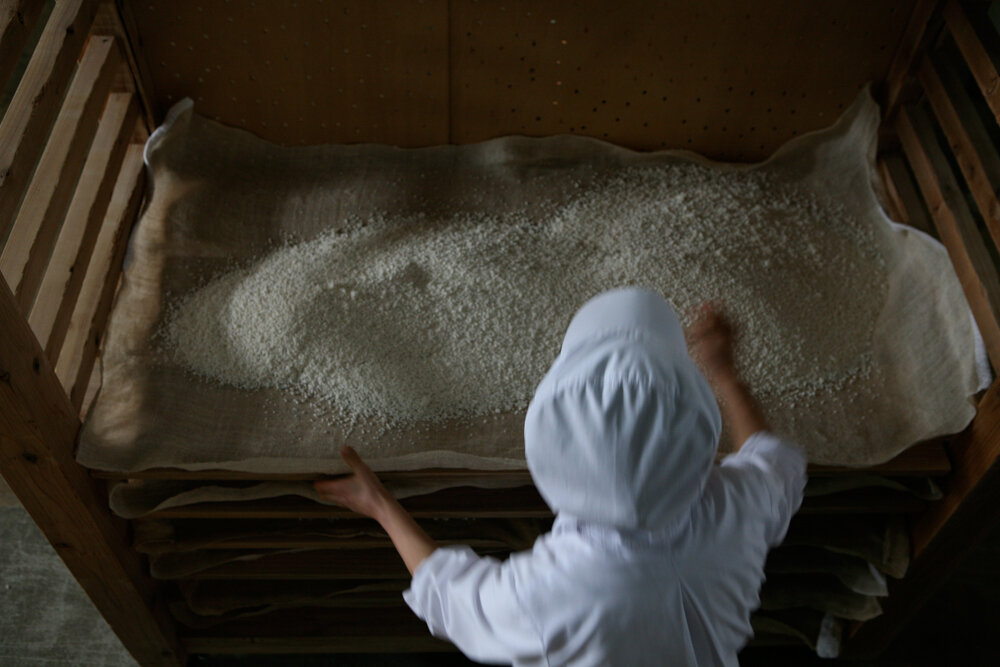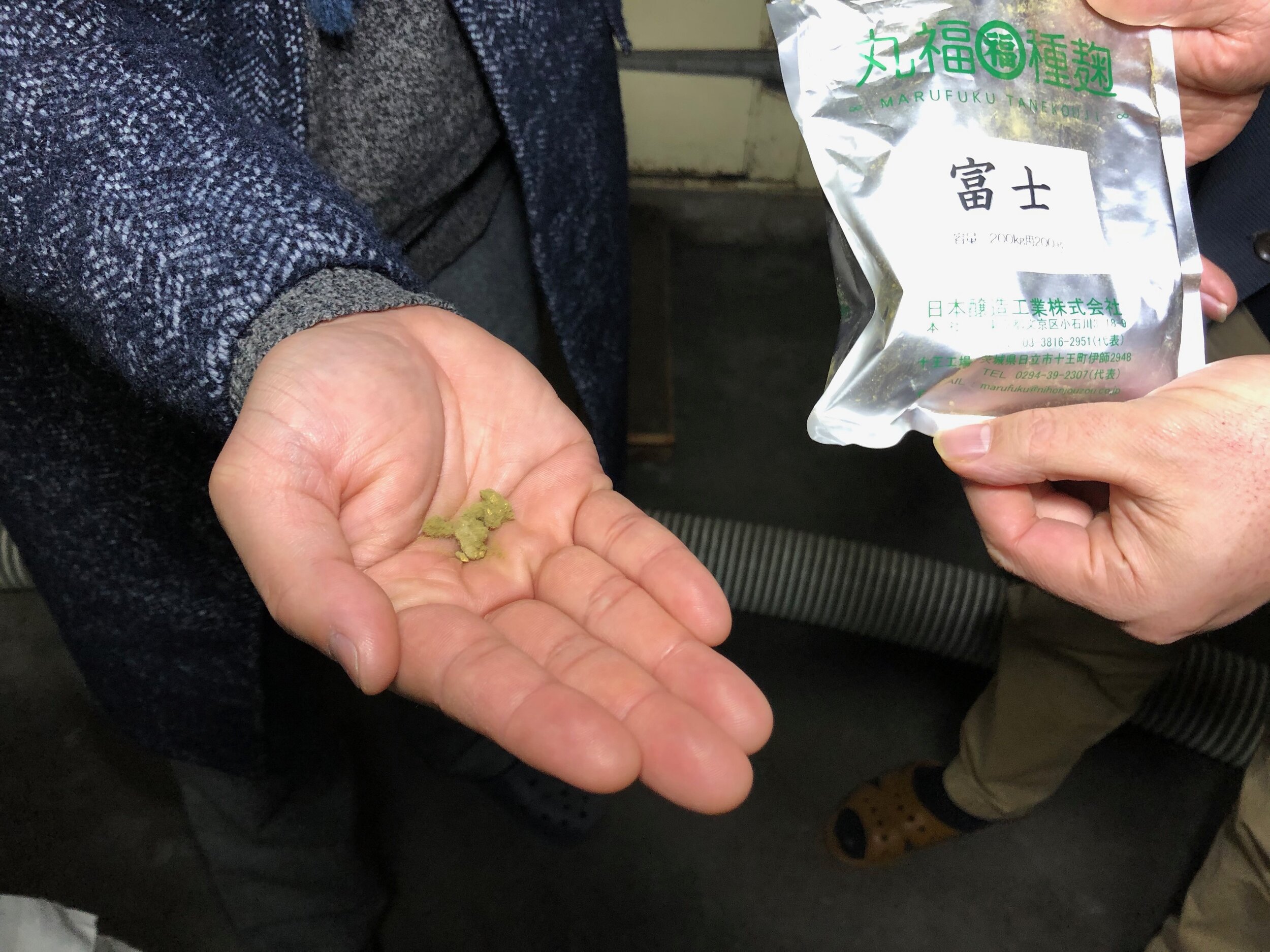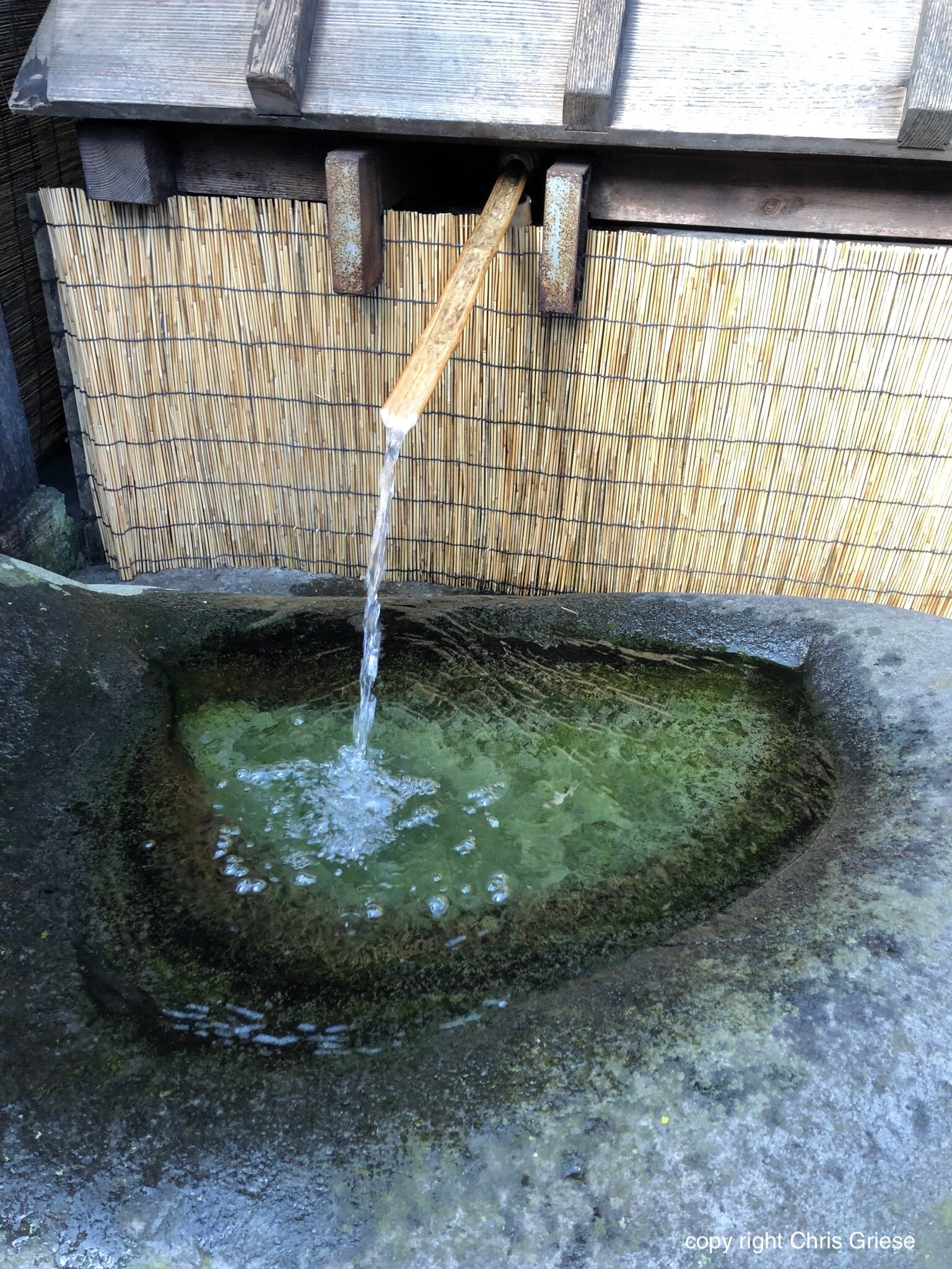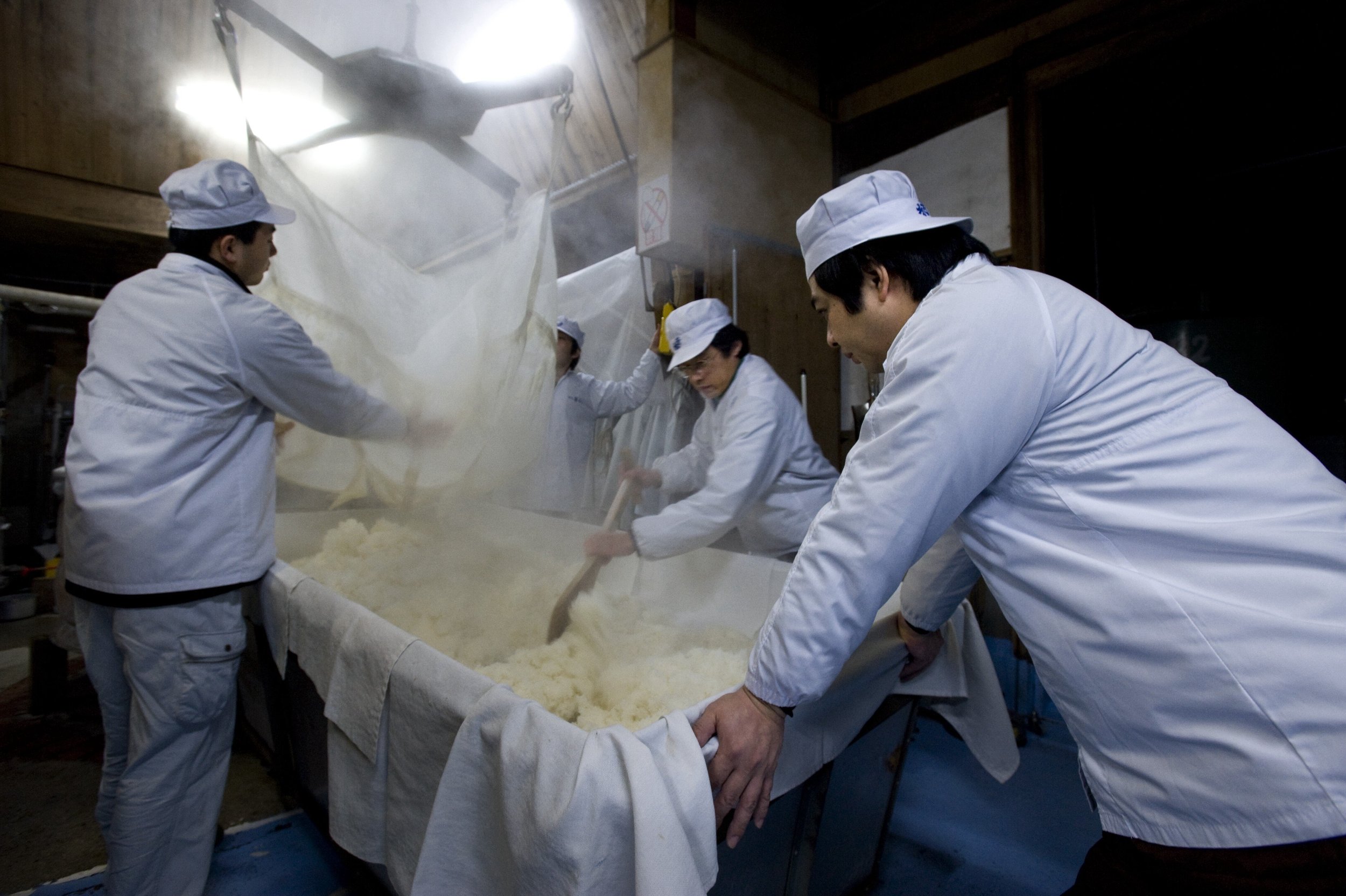
The process starts here
Raw Materials

Sake Rice
Sake Rice is a type of annual cereal grass which is planted each Spring (April-May) and harvested in the Fall (Sept-Oct). There are approximately 200 strains of Sakamai (rice for sake-making) cultivated in Japan today with new local varieties constantly in development. Growing and farming rice is specialized, as is brewing sake. Traditionally and by law, the brewers were not the growers...however this has changed. Systems integration and the Farm to Table movement are changing traditions by encouraging increased connection to the land and resulting crop, as well as adding year-round brew-crew employment.
Rice, like oats or wheat, may be dry-farmed, however in Japan, all rice (table or sakamai) is grown in irrigated fields (paddies) with fertilization kept to an absolute minimum. Following harvest the rice grains are allowed to dry to 14-15% moisture; they are then dehusked (brown rice) and readied for storage or sale.
Growers and brewers are looking for these preferred characteristics in Sakamai:
Large grain 25-30 g/per 1000 grains
Low protein smaller amounts of amino acids and undesirable
Non-sticky
Well defined flat or disc shaped Shimpaku (starchy heart)
Good water absorbency, dissolves easily during fermentation
Sturdy plant, decease resistant, financially viable crop size
Photo Courtesy of WSET

Koji Mold
Koji-kin / Aspergillus Oryzae / Koji
Koji-kin is a commercially produced mold spore used in many types of fermented foods and beverages to create fermentable sugars and amino acids. Three types are most commonly used; black (aspergillus kawatchi) , white (aspergillus kawatchi) , and yellow (aspergillus oryzae) ; each has its own distinct influence on fermentation, aroma, body and flavor profile. Yellow koji is most predominant koji used for sake brewing. Within that family, certain sub-strains may be selected to enhance non-ginjo (So-haze) or ginjo (Tsuki-haze) characteristics if propagated at specific temperatures and humidity.
Koji Production (growing Koji-kin on starter rice) is highly sophisticated, central to successful fermentation and always the responsibility of the Toji Master. In general Koji production requires 48 - 54 hours to cultivate sufficient koji spores to support a complete yeast fermentation. Finished Koji may be refrigerated and stored for immediate or future use.

Water
Brewers will tell visitors that their local water is the single most important element in the creation of their sake; that to understand their style of sake one must also understand the character of the water.
From north to southwest, Japan has large quantities of the fresh, pure, soft water required for the production of high-quality sake. Most sake breweries are built on top of or adjacent to this important resource.
Fresh water is needed to flood rice fields to protect newly planted rice starts; is required to irrigate the rice crop during the growing season; is used to wash and soak milled rice in preparation for steaming; is incorporated as a large proportion of the fermenting sake, needed for final dilution and is required for brewery and equipment sanitation.
In the in colder mountainous areas of Japan, breweries may use water supplied by fresh snow melt; (springs and streams) This type of soft water has a large impact on the fermentation rates and final character of a sake. In warmer climates farther south or west, water may be sourced from underground aquafers or deep wells; this water may or may not be slightly harder or higher in mineral content which also affects the fermentation rates, style and final character of the sake.
Yeast
What is Yeast
Yeast is a single cell micro-organism in the Fungi Family that converts glucose to ethanol alcohol, CO2 and heat. During sake brewing, yeast works in conjunction with Koji enzymes (starch to glucose) to complete the alcoholic fermentation (glucose to alcohol).
Today, breweries have access to an almost limitless number of yeasts for sake production. Over the past century continuous research has gone into to identifying the alcoholic fermentation and aromatic characteristics of thousands of individual yeast strains. This simple one celled organism is capable of creating a vast array of aromatics esters and compounds that give sake its range of flavors.
Specific yeasts are selected and maintained for sake production by the Brewing Society of Japan, or the local Prefectural Agriculture Departments or even within individual breweries. Selections are based on vigor, aroma, flavor, alcohol production and a yeast’s ability to function in specific environments.
Commonly Used Yeasts for Sake:
Akita Kyōkai #6 Lower aromatics, fruity, crisp, umami
Kyōkai #7 Rich aromatics, moderate Ginjo-ka
Kyōkai #9 Kumamoto, pronounced fresh aromatics, ethyl caproate
Kyōkai #10 Low acidity, pronounced Ginjo-ka
Kyōkai #12 Moderately high rich aromatics, good for Yamahai
Kyōkai #1501 High Ginjo-ka, low acid, high ethyl caproate
Kyōkai #1801 High aromatics, high Ginjo-ka, low acidity
Hiroshima #6 High ethyl caproate
Fukushima F7-01 Melon, ethyl caproate, low acidity


